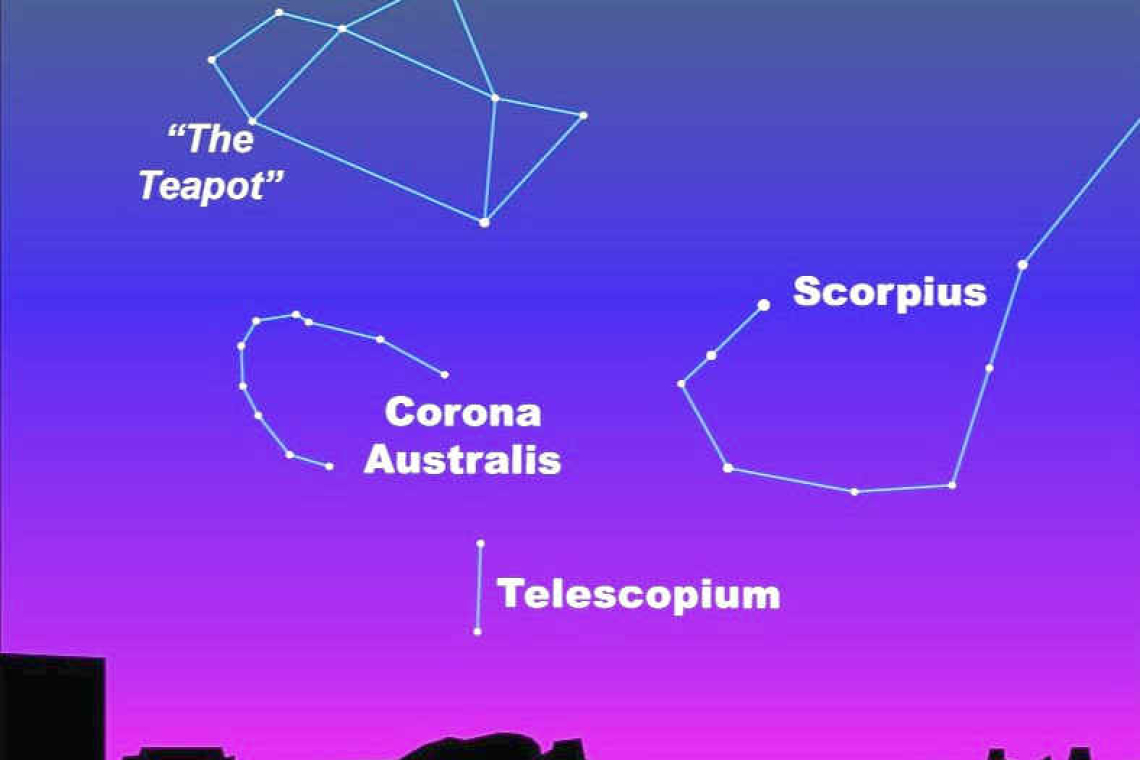~ St. Maarten’s Backyard Astronomy for September 28-30 ~
Sun rises at 6:02am
Sun sets at 6:02 pm
Lunar phase: 4th quarter, waning crescent
Moon rises at 2:35 am, Saturday
Moon sets at 3:51 pm, Saturday
This weekend, we have lovely dark skies for optimum viewing of stars and planets. The crescent moon rises late (very late) and then will offer virtually no moonlight, so the stars are able to shine all the more brightly. If GEBE goes out, and if the clouds are few and far between, you simply must go out for some Grade-A stargazing! Bring your binoculars or set up that backyard telescope!
Early evening, look for Venus low in the Western sky, and Saturn high in the South-eastern sky. As darkness deepens, the stars of the southern sky become apparent. Scorpius and Sagittarius are clear in the southern sky, about 30 degrees above the horizon. Sagittarius is recognized by the “teapot” shape and Scorpius has a curled tail just below and to the right of the teapot’s spout. Below Sagittarius, look for the half circlet known as the Southern Crown or Corona Australis.
Overhead, about 7:00pm, the two huge birds dominate. These are Aquila the Eagle and Cygnus the Swan. These two constellations each contribute their brightest star to the famous Summer Triangle, the third point being Vega in the constellation Lyra, the Harp.
Meanwhile further East, find the large constellation Pegasus rising up. It is seen as a “Great Square” but represents the Winged Horse of Hercules. If you can get a view to the northern horizon, you’ll see the Big and Little Dippers, Cassiopeia the Queen and Cepheus the King. Cassiopeia looks like a sideways “W” and Cepheus resembles a child’s drawing of a house. One of our longest constellations winds around all these others, its Draco the Dragon, with a polygonal head and a long twisting tail.
By midnight, Jupiter can be seen rising from the eastern horizon, with Mars following about 45 minutes later. Jupiter sits between the horns of Taurus the Bull and Mars is directly between the twins of the Gemini constellation. By this time, the suite of constellations in the southern sky has shifted to show Orion the Hunter and Canis Major (the Big Dog). Orion is noted for his belt – three bright stars in a row; while Canis Major boasts the brightest star in our entire sky – Sirius.
Around 3:30am the slim crescent moon rises, showing she is soon to be in her new moon phase when we will not see her for a night or two. Keep stargazing this week and next, we will return on October 19 to discover more glories on display in the Night Sky.
Thank you for keeping up with the Night Sky articles, backyard (or beach) astronomy designed for St. Maarten sky viewing. FYI: If you are out later on in the week, note that each star rises about four minutes earlier each day than written here, and the moon rises 50 minutes later. Night Sky is researched and compiled by Lisa Davis-Burnett. Earthsky.org is a key resource for information and images. Questions or comments? Email This email address is being protected from spambots. You need JavaScript enabled to view it.







